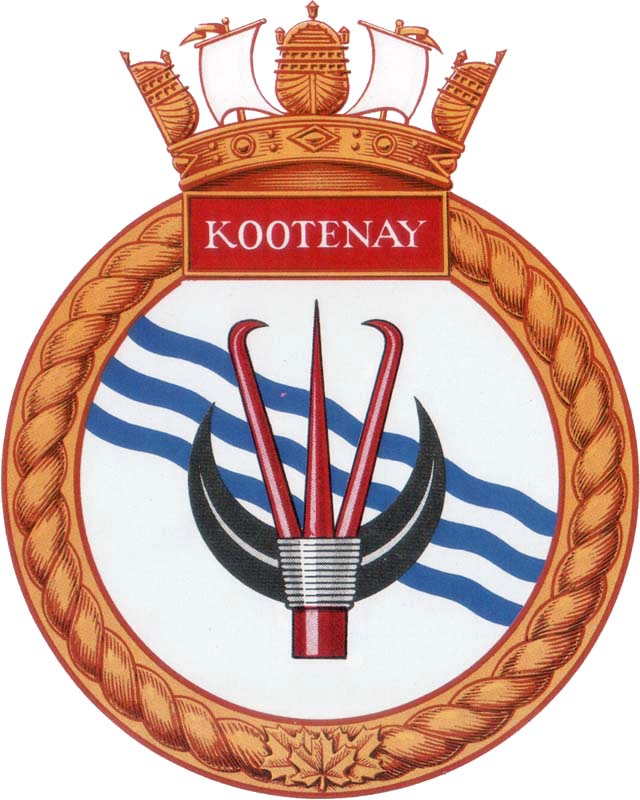HMCS KOOTENAY Badge

Blazon
Argent, three cotises in bend wavy azure, over all a crescent sable debruised by an Indigenous fish spear-head gules, bound around the hilt with thongs argent.
(Glossary of Heraldic Terms)
Significance
The Kootenay Indigenous people from which the river derives its name were known to have depended for food upon the fish caught in the rivers and streams and on the buffalo found to the east on the slopes and foothills of the Rocky Mountains. The buffalo also provided them with skins for wearing apparel, and other necessities. In the badge design, the Kootenay River, for which the ship is named, is symbolized by the three blue diagonal wavy stripes. The black crescent resembles the horns of the bison or buffalo, and the fish spearhead is typical of the kind used by the Indians. While this design carries no reference to any legend or historical event that might inspire courage and devotion, it is nevertheless a unique and interesting symbol for a ship-of-war in that the horns and spear are both instruments of attack and at times, of defence.
Remarks
Kootenay (I) was a River class destroyer. Originally HMS Decoy, she was commissioned into the RCN in April 1943. She wore pennant H75 until she was decommissioned October 1945. Kootenay (II) is a member of the Restigouche class of destroyer escorts. She was commissioned in March 1959, and wears pennant 158. She has subsequently undergone conversion to an Improved Restigouche class destroyer.
Motto
We are as one.
Colours
Red and white
Battle Honours
Atlantic 1943–1945; Normandy 1944; English Channel 1944; Biscay 1944.
References
Badges Of The Canadian Navy by Arbuckle, J. Graeme. Halifax: Nimbus Publishing, 1987.
CFP 267 - Badges of the Canadian Forces, Minister of Supply and Services Canada, 1977.
